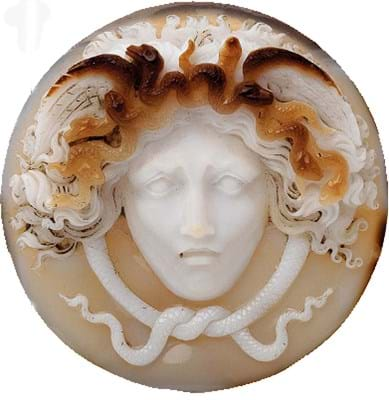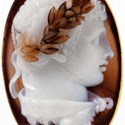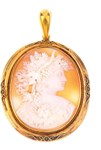IF just occasionally on the wrong side of 20th century fashion, the collecting of cameos and intaglios has been a near constant in the jewellery market for more than two millennia.
King Mithridates VI of Pontus (d.63BC), whose famed collection formed part of the booty of Pompey the Great, and Julius Caesar, who gave six cameo collections to his personal Temple of Venus Genetrix, were among the many early enthusiasts.
The second tranche of a fine group of cameos from a private collection formed in the 20th century was sold by Bonhams Knightsbridge (25/20/12% buyer’s premium) on December 12.
The 21 lots focused on neoclassical hardstone cameos from the 18th and 19th centuries, during which time the glyptic arts reached an apex both in terms of fashion and technical excellence.
The signatures of some of the finest gem engravers from the creative centre of Rome were represented – ensuring the participation of the small but dedicated group of collectors in this highly-specialised field.
Surprises emerged. Unmounted, a mid-19th century agate cameo of Medusa by the Roman gem engraver Luigi Isler sold at a remarkable £58,000 (estimate £2200-2800).
Measuring 2in (5.5cm) across, it is finely carved in high relief with a composition borrowing freely from the ancient Rondanini Medusa in the Glyptothek, Munich.
Fellow Italian Benedetto Pistrucci (1783-1855) also used this model as inspiration. His version, set within a frame by Carlo Giuliano, is now in the Metropolitan Museum of New York. It was, said Jean Ghika, director of jewellery for the UK and Europe at Bonhams, “a case of two buyers who really wanted it”.
The sum of £11,000 was bid twice, first within expectations for a (cracked) Pistrucci agate cameo of a laureated youth in profile. Pistrucci is particularly well-known in Britain as, from 1816, he worked extensively at the Royal Mint (a deeply unpopular decision at the time) before being made its director in 1828.
Much of his cameo cutting is thought to pre-date these years.
Famously, in 1815, at a party held by Sir Joseph Banks, he told assembled guests that a much admired ‘ancient’ relic, purchased some years earlier from the Golden Square art dealer Mr Boneli, had been created in his workshop. To prove his boast, within three months he duly delivered a near perfect match.
A scratch signature in Greek letters to a bust portrait of a neoclassical maiden in a gold and half-pearl mount was probably for Luigi Michelini. He is listed in the 1839 Pocket Companion to Paris; For the use of the English which states “he is considered to be the cleverest engraver” – and is known to occasionally sign his work in Greek.
This time the £11,000 was bid well above hopes of £1500-2000.
In the 18th and early 19th centuries British and European aristocrats competed against each other in pursuit of the finest gems.
An agate cameo of Perseus was one of three pieces in the sale signed by Nicolo Morelli (1771-1830), the Roman gem engraver patronised by Napoleon and Pope Pius VII among others.
Pistrucci was among his pupils. Here Perseus is shown in profile, the embodiment of the classical ideal, wearing scaled armour and the cap of invisibility. It sold at £15,000 (estimate £6000-8000).
Among the earliest pieces on offer – and one of the few from Germany – was a mid-18th century agate cameo ring carved with a man in profile signed Natter. F for the medallist Johann Lorenz Natter (1705-63).
Natter wrote extensively on the subject and in 1754 his Traité de la méthode antique de graver en pierres fines, which compared ancient and modern gems, brought him the honorary membership of the Society of Antiquaries.
This relatively modest example of his craft took £6000 (estimate £800-1200).















